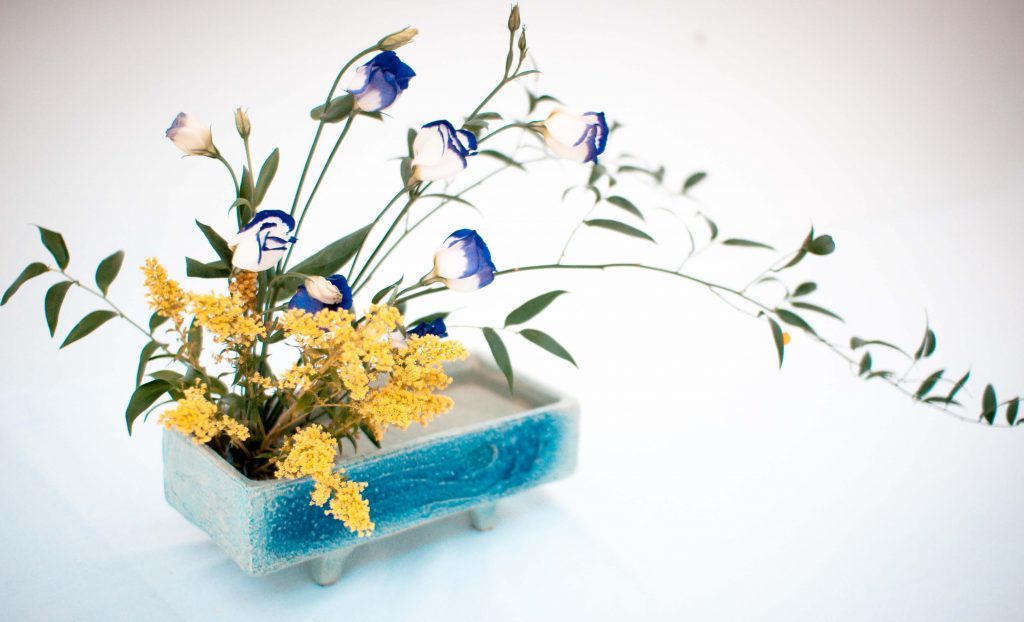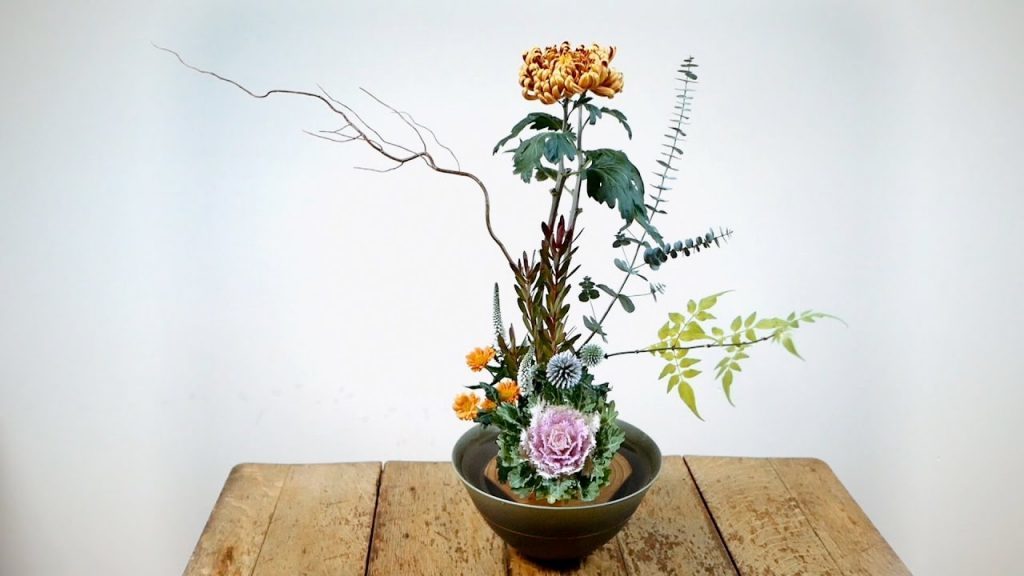
Ikebana is the traditional Japanese flower arrangement art with a long history, dating back to the 7th century. Flower arrangement is a delicate custom, where nature breathes into the subject of a simple sculpture. Ikebana creates images […]
Ikebana is the traditional Japanese flower arrangement art with a long history, dating back to the 7th century. Flower arrangement is a delicate custom, where nature breathes into the subject of a simple sculpture. Ikebana creates the shape and temperament of the work by arranging branches, flower tops, leaves into a whole that expresses the feelings of the person who plugs.
Once peaked in the 16th century, the traditional Japanese flower arranging art is being revived with more and more people practicing. Today, Ikebana focuses on creativity from color, shape to line. Traditional components such as bamboo grass and plum branches are interwoven with seasonal grass flowers of each region.
To learn more about Ikebana, or kadou, join ELLE Vietnam to learn about the history of birth, the underlying philosophy as well as the basic styles of this art form.

- HISTORY OF JAPANESE FLOWERING OF JAPAN
Shinto, the state religion of Japan until 1945, has a tradition of cultivating plants and an abundance of nature. Many flowers and flowers are given a special meaning and become offerings to kami souls in Shinto. In the seventh century, when Buddhism was introduced to Japan, flowers began to be used for offerings. Flower arrangement appeared for the first time in temple worshiping services, gradually becoming popular and symbolic. By the end of the fifteenth century, Shogun Ashikaga Yoshimasa became a great proponent of Tea ceremony and Chinese religion. He believed that the sacrificial offerings required a lot of hard work and dedication, thus starting to set forth rules for the art of arranging Ikebana later.
By the sixteenth century, various schools of Ikebana were established and gradually escaped from the strict religious context. Flower arrangement is often performed by Japanese generals because they believe it can help free the mind to make the right decisions on the battlefield. At this time, people also have special niches called tokonoma used to place flowers.
Although Ikebana declined significantly after the 17th century, there are still more than 1,000 schools that teach this type of art today. This includes Ikenobō, the largest and oldest school built by a monk in the 15th century, located inside Rokkaku-dō temple in Kyoto.
- CONTAINING PHILOSOPHY IN IKEBANA FLOWER ART
In Japan, each species of plants contains a unique meaning. So people are very careful and strict in choosing materials for flower arrangements. For example, pine trees with eternal meanings are often used in the New Year. On the 3rd of March every year, full-blown peach branches are used for the Doll Festival. Tough bamboo symbolizes youth while apricot branches in full bloom are symbols of old age.
Ikebana’s meaning is expressed through the layout as well as the color. High winds in Japan usually occur in March, so during this time, people often install curved branches to reflect the movement of the wind. White flowers are used in housewarming occasions, as they represent water, which helps the host to escape from any fire, while on the contrary, fiery red flowers will be avoided. The language of flowers, also known as hanakhotoba, will help us understand more about the specific meaning of individual plants in Japan.
When Ikebana became part of Japanese culture through Buddhism, it gained more philosophical significance from religion. Practitioners of Ikebana believe that they should be attentive and patiently arranging flower arrangements in silence. This aspect of meditation helps people understand the flower and grass deeply, arranges the beautiful layout and above all comes closer to nature.
It is important that the plugin understands how the materials are made to enhance their inherent beauty. The flowers can be plucked and re-mounted in a more aesthetically compatible position, which can be trimmed as a base for other flowers. The branches can be bent or straightened for complex forming. Both dry and fresh materials are cut or painted as needed to harmonize the composition.
Ikebana flower arranging art has many different schools and styles but still follow a basic principle of a proportional triangle, including subjects symbolizing Japan – Nguyet – Diagonal; or it could be Thien – Nhân – Dia. The choice of the vase is also quite important, as the amount of water and its exposure to air can affect the overall layout.